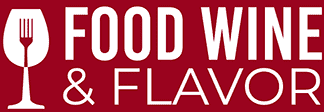In today’s fast-paced world, maintaining a mindful lifestyle can be a game-changer for your overall wellbeing. At Food Wine and Flavor, we explore innovative ways to enjoy life’s pleasures—like turning a simple glass of wine into a self-care ritual—to show love and mind your business it’s a lifestyle. Discover how to stay healthy and mindful in personal lifestyle choices, and learn practical tips to create wine rituals that promote a healthy lifestyle healthy mind. Join us on this journey of intentional living, where every sip is a step towards deeper mindfulness and a more balanced life.
Welcome back to Mindful January on Food Wine and Flavor! In this segment, we’re exploring how to make wine a part of a mindful lifestyle by creating personal rituals around your wine tasting. Whether you’re a seasoned enthusiast or just beginning your journey, these tips will help you slow down, savor the experience, and learn more about the wines you love.
Create a Mindful Wine Ritual
Mindfulness isn’t just for meditation—it can enhance every sip of wine. One of my favorite techniques is journaling your wine experience. Instead of just drinking and moving on, take a moment to record your impressions. Not only does this help you savor the experience, but it also builds a personal reference that can guide your future choices.
Journaling Your Wine Experience: The Five S’s
A great way to start is by using the five S’s as your guide:
- Title & Details
- Write down the name of the wine, its vintage (e.g., 2021 Chardonnay), and the producer.
- Sight
- Observe the wine’s appearance. Is it clear? Pale or medium in color? For a Chardonnay, note the lemony hues or the clarity of the pour.
- Sniff
- Take a moment to note the wine’s aromatics. With Chardonnay, you might detect hints of lemon, stone fruits like peach or apricot, and perhaps subtle notes of brioche or vanilla from a gentle oak influence.
- Swirl & Sniff Again
- Swirl the wine gently to aerate it, then take another sniff. Notice how the aromas evolve.
- Sip & Savor
- Finally, evaluate the wine’s taste by considering its five characteristics:
- Acidity
- Alcohol
- Tannins
- Oak
- Body
Write down your impressions. Is the wine bright and acidic? Does it have a full body with a hint of oak? These notes not only help you remember the wine later but also deepen your connection to the experience.
- Finally, evaluate the wine’s taste by considering its five characteristics:
Exploring Chardonnay: A Case Study in Versatility
Let’s use Chardonnay as an example. If you’ve ever thought you didn’t like Chardonnay, here’s a tip: you might not dislike the grape itself—you might just not have found the style that suits your palate. Chardonnay is one of the most malleable grapes in the world. Depending on the region and winemaking techniques, its profile can vary dramatically:
- Chablis (France): Expect a mineral character with hints of wet rocks.
- California: You might encounter a buttery, oaky version—sometimes overdone, sometimes balanced.
- Burgundy (France): Typically more subtle, offering delicate nuances.
- Australia: Similar to Californian styles but often with a more restrained touch.
If a rich, full-bodied Chardonnay isn’t your style, consider exploring lighter varietals like Sauvignon Blanc, Pinot Grigio, or a dry Riesling. Experimenting across regions can open up a whole new world of flavors and profiles.
Grow Your Wine Journey
By taking the time to jot down your wine notes, you not only create a record of what you enjoy but also set the stage for a deeper understanding of your wine preferences. Use these rituals as a form of self-care—an opportunity to slow down, reflect, and truly enjoy each glass.
For more guidance on exploring different varietals, check out my article on What’s YOUR Favorite Chardonnay? There Really IS Something For Everyone or go to the menu above (in the red strip) and select Wine, then Varietals and the grape you want to learn more about.
Under the Wine menu, you’ll also find detailed information on the major wine regions—from France to New Zealand, Chile, Australia, South Africa, and California—as well as a free Pocket Guide at the bottom of this page to help you select the perfect wine in any situation at the snap of a finger!
Join the Conversation
I encourage you to make mindful wine rituals a regular part of your wine journey. Whether you’re with a big group of friends or enjoying a quiet evening alone, take a moment to note your thoughts—on a napkin, in your phone, or in a dedicated journal.
Share your mindful wine moments and discoveries with our community on social media using the hashtag #MindfulWithWine or share your takeaways and what you’re learning below in the Comments. And don’t forget to join our free VIP Facebook group for even deeper conversations about wine.
Thank you for joining me on this exploration of mindful wine rituals. I hope these tips inspire you to start the new year with intentionality and a deeper appreciation for the artistry of wine.
Related Posts
Mindful January – the Advantages of Exploring Wine with Blissful Intention
Mindful January | Segment 1 – Embrace Mindfulness and Intentionality
Mindful January | Segment 2 | Five S’s of Wine Tasting
Mindful January | Segment 3 | Mindful Pairings – Elevate Your Dining Experience
Mindful January | Segment 4 | Fascinating Wine Stories
France: The Loire – Amazing Wines for Absolutely Every Taste
Post Created: Jan 6, 2023






0 Comments